25 Fascinating Facts About Coral Reefs Around the World
Original content owned & copyrighted by Green Global Travel. If you’ve spent anytime snorkeling or Scuba diving in places like Australia, the Galapagos Islands, or Polynesia, you don’t need me to tell you that exploring the underwater world can be an extraordinary adventure. And if you follow environmental news, you also don’t need me to tell you about the dangers climate change pose to Keep Reading The post 25 Fascinating Facts About Coral Reefs Around the World appeared first on Green Global Travel.
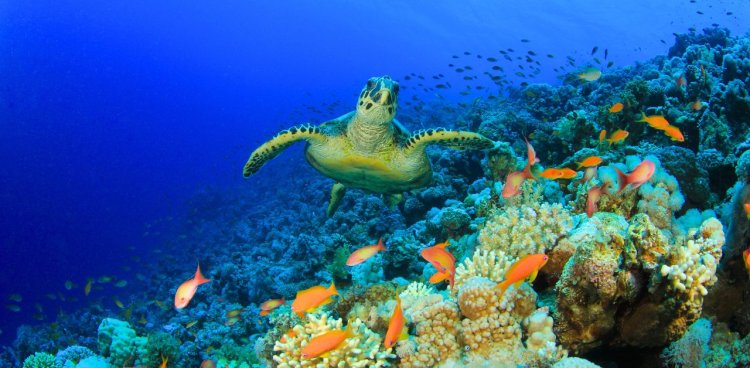
Original content owned & copyrighted by Green Global Travel.
If you’ve spent anytime snorkeling or Scuba diving in places like Australia, the Galapagos Islands, or Polynesia, you don’t need me to tell you that exploring the underwater world can be an extraordinary adventure.
And if you follow environmental news, you also don’t need me to tell you about the dangers climate change pose to the future of our planet’s marine ecosystems.
So instead, here are 25 fascinating facts about coral reefs that you might not know, from general info and the benefits of coral reef systems to a few of the world’s most impressive sites…
READ MORE: What Is Ecotourism? (The History & Principles of Responsible Travel)
 Great Barrier Reef in Australia via pixabay
Great Barrier Reef in Australia via pixabay
Facts About Coral Reefs Around the World Guide
- General Facts About Coral Reefs
- The Benefits of Coral Reefs
- Facts About Coral Reefs Around the World
- Coral Reefs & Climate Change
READ MORE: The 30 Best Exotic Islands to Visit (World Travel Bucket List)
 Helping With Research on the Effects of Alkalinity on Brain Coral at the Bermuda Institute of Ocean Sciences photo by Bret Love
Helping With Research on the Effects of Alkalinity on Brain Coral at the Bermuda Institute of Ocean Sciences photo by Bret Love
General Facts About Coral Reefs
1. Corals come in a wide array of shapes, sizes, and colors. Some are thought to resemble deer antlers, trees, giant fans, brains, and honeycombs.
2. Although many corals may look like plants, they’re actually animals. They are most closely related to Jellyfish and Anemones.
3. There are three different types of coral reef formations– barrier reefs, coral atolls, and fringing reefs. Barrier reefs help to protect lagoons and other types of shallow water, coral atolls (which are often mistaken for islands) are made from volcanic remains, and fringing reefs are found right along the coastline.
4. Coral reefs grow very slowly, at an average rate of just 2 centimeters per year.
5. Coral reefs only grow at a maximum depth of around 150 feet. This is because their biomes must maintain a temperature of 70 to 85º Fahrenheit. Shallower water is more easily warmed by the sun.
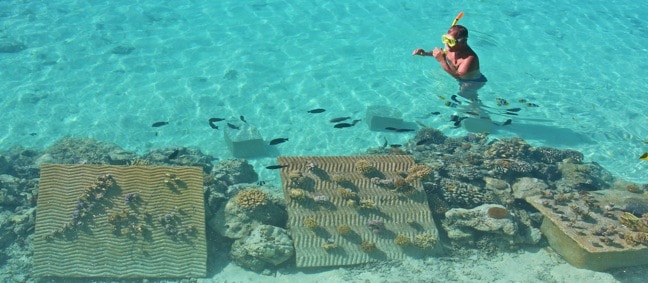 Snorkeling Bora Bora, the Ruahatu Lagoon Sanctuary’s Coral Nursery photo by Bret Love
Snorkeling Bora Bora, the Ruahatu Lagoon Sanctuary’s Coral Nursery photo by Bret Love
6. Strangely, most coral reefs seem to grow on the eastern side of land masses, where the temperature is believed to be warmer than the western side.
7. If you find a broken piece of coral on the beach, you can see its hard shell, which is actually an animal called a polyp. It is the cluster of these polyps growing together that gives coral reefs their shape.
8. Some coral reefs are more biodiverse than others. The array of marine species living within the coral reef’s biome depends on the location’s latitude and the direction of the water.
9. Coral reefs seem to grow best where there are stronger currents and wave patterns. Scientists believe that this is because stronger currents and waves deliver more food for the marine ecosystem.
10. The algae that typically grows on and around a coral reef isn’t a plant, but a living creature. There are many different kinds of algae, from microscopic varieties to ones with leaf-like appendages that can grow several feet long.
READ MORE: 30 Cool & Weird Ocean Animals Around the World
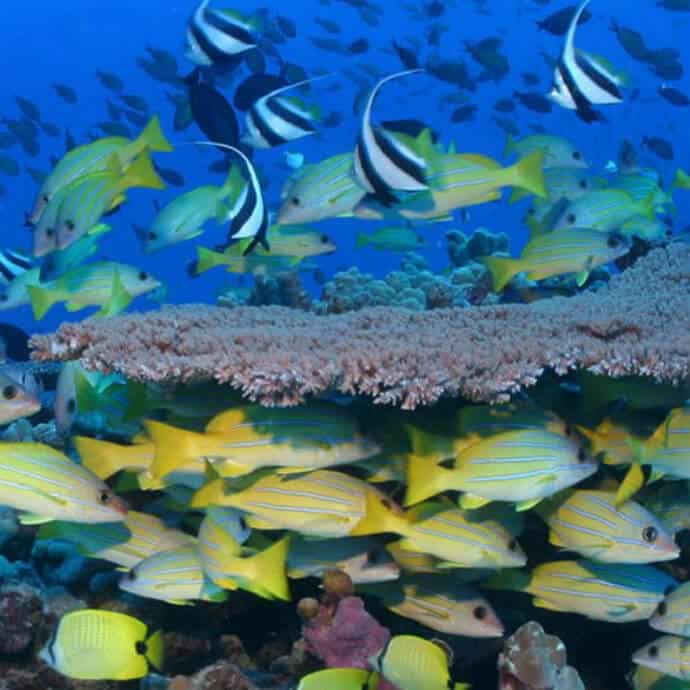 A glimpse of the endemic fish species within Papahānaumokuākea Marine National Monument, Hawaii photo by National Park Service CC0 Public Domain
A glimpse of the endemic fish species within Papahānaumokuākea Marine National Monument, Hawaii photo by National Park Service CC0 Public Domain
The Benefits of Coral Reefs
11. Many parts of a coral reef can be harvested to make medications. According to the National Oceanic & Atmospheric Administration, “Coral reef plants and animals are important sources of new medicines being developed to treat cancer, arthritis, human bacterial infections, Alzheimer’s disease, heart disease, viruses, and other diseases.”
12. Coral reefs are among the biodiverse ecosystems on the planet. There are often more types of fish living in a 2-acre area of healthy coral reef than there are species of birds in all of North America!
13. Coral reefs help to improve the quality of the surrounding water. They do this by filtering out things floating in the ocean, which leads to cleaner water.
14. Coral reefs help stabilize the seabed, helping seagrass, seaweed, and other marine plants to survive. These plants lessen the impact of storms and help prevent the ocean bed from being washed out. They also provide food and protection for a broad variety of marine animals. Fish, Manatees, Dugongs, and countless other species feed and raise their offspring there.
15. In addition to protecting shorelines, coral reefs are immensely valuable to the fishing and tourism industries. According to the World Resources Institute, the destruction of 1 kilometer of coral reef equals a loss of between $137,000 to $1,200,000 over a 25-year period. And yet they estimate some 60% of the world’s coral reefs are currently threatened by human activity.
READ MORE: 20 Best Caribbean Islands to Visit (If You Love Nature & Hate Crowds)
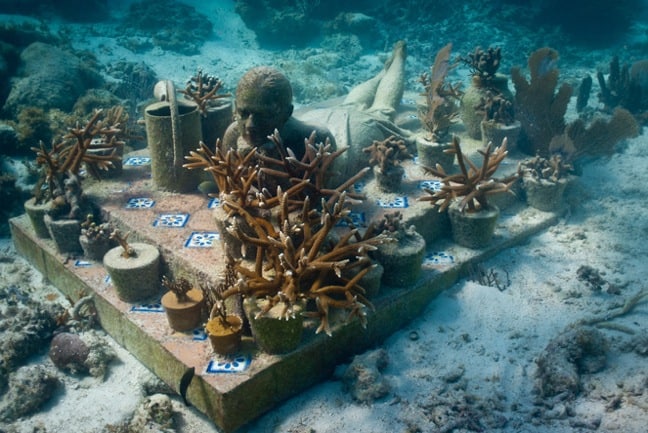 “The Gardener Of Hope” Installation at Cancun Underwater Museum sculpture by Jason Decaires Taylor
“The Gardener Of Hope” Installation at Cancun Underwater Museum sculpture by Jason Decaires Taylor
Facts About Coral Reefs Around the World
16. Australia’s Great Barrier Reef is the largest reef system in the world, and can be seen from outer space. Encompassing a 133,000-square mile area, it’s comprised of more than 2,900 individual reefs and 1,050 islands, which stretch out over 1,400 miles long.
17. Stretching over 550 miles from Cancun to Honduras, the Mesoamerican Barrier Reef is the world’s second largest coral reef system, attracting some 150,000 people to Mexico each year.
18. Located in the Philippines, Tubbataha Reefs Natural Park was declared a UNESCO World Heritage Site in 1993 due to its pristine coral reef system. Encompassing 97,030 hectares, the park’s two coral atolls are home to 600 species of fish, 360 species of coral, 11 species of sharks, 13 species of dolphins and whales, birds, plus Hawksbill and Green sea turtles.
19. Located between the Sahara and Arabian deserts, the Red Sea Coral Reef is noteworthy for its ability to withstand extreme temperature changes. Measuring 1,200 miles long, the reef is home to 300 hard coral species and about 1,200 fish, of which 10% are endemic to the area.
20. The Belize Barrier Reef, which was named a UNESCO World Heritage Site in 1996, stretches 190 miles along the country’s coastline. It is home to 70 hard coral species, 35 soft coral species, 500 species of fish, and hundreds of invertebrates.
READ MORE: Cancun Underwater Museum (Artist Jason deCaires Taylor on his Marine Conservation Masterpiece)
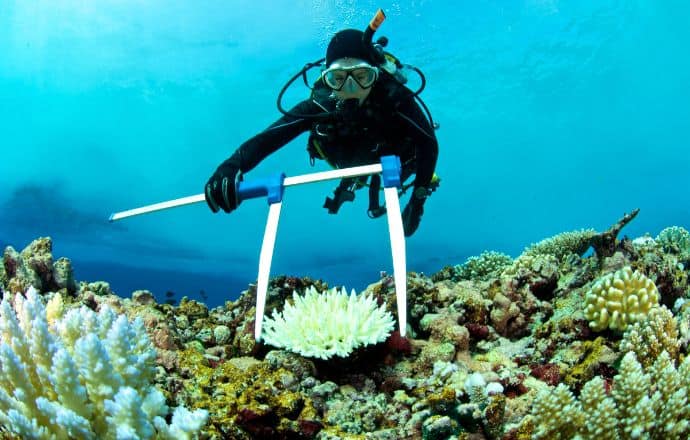 Marnie Biologist measures bleach coral
Marnie Biologist measures bleach coral
Coral Reefs & Climate Change
21. Oceans are great at absorbing much of the dangerous carbon dioxide that enters the Earth’s atmosphere. Unfortunately, it makes the water increasingly acidic. This acidification prevents corals from absorbing the calcium carbonate they require in order to maintain their skeletons, and the stone-like skeletons that support them.
22. Coral reef systems are naturally colorful because of the algae that is usually present. If you see a coral reef that appears white– a process known as coral bleaching– it was most likely the result of warmer water temperatures caused by climate change.
23. The first widespread incident of coral bleaching happened in 1998, when an estimated 16% of corals died. But the worst incident on record occurred in 2015-2016, when an extended El Niño event warmed Pacific waters near the equator.
24. Recent studies suggest the planet has lost approximately half of its coral reefs in the last 30 years and could lose more than 90% by the year 2050 is drastic changes are not made.
25. Marine scientists from The Nature Conservancy, 50 Reefs, and other NGOs are working diligently to fight climate change, protect the coral reefs we have left, and come up with innovative solutions. Ruth Gates, director of the Hawaii Institute of Marine Biology, is currently trying to breed and train new corals to better withstand rising ocean temperatures. –by Bret Love, featured image of Hawksbill Turtle with coral reef via Canva
The post 25 Fascinating Facts About Coral Reefs Around the World appeared first on Green Global Travel.
















